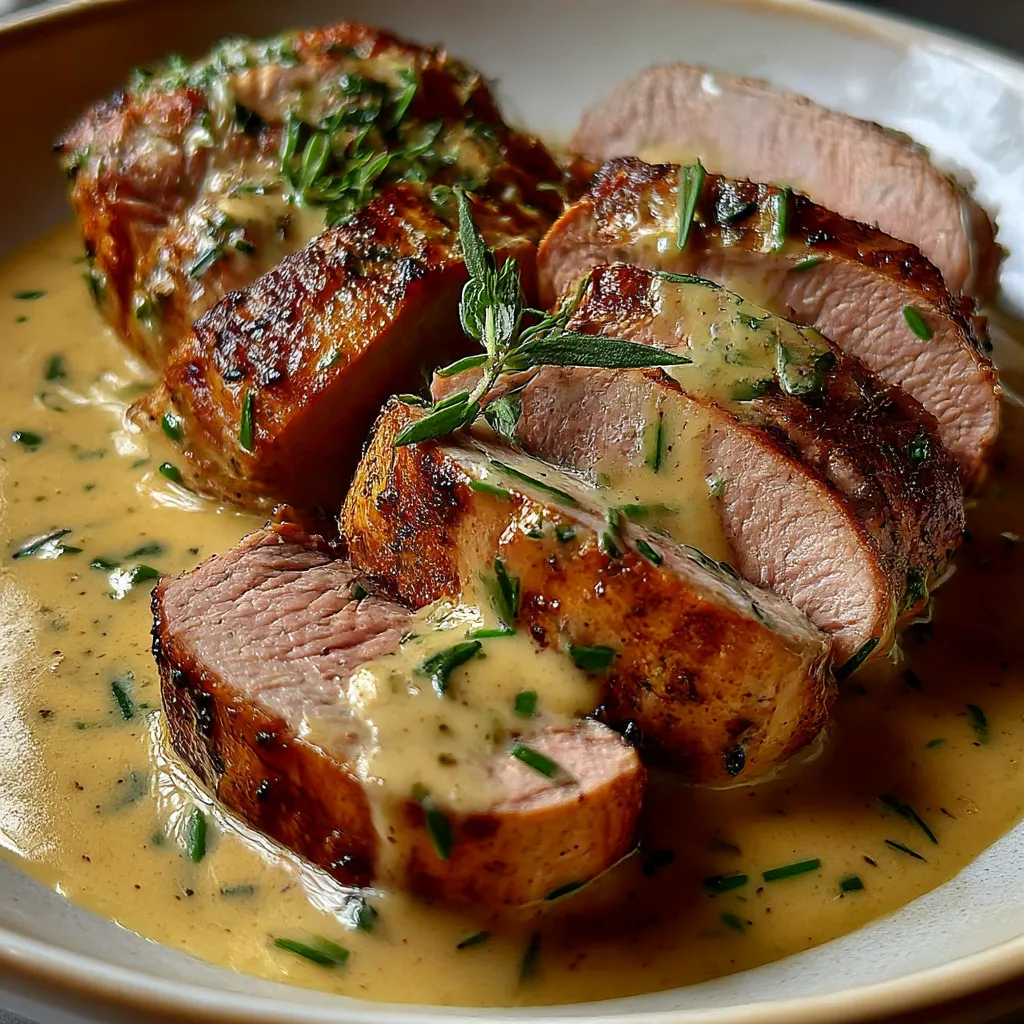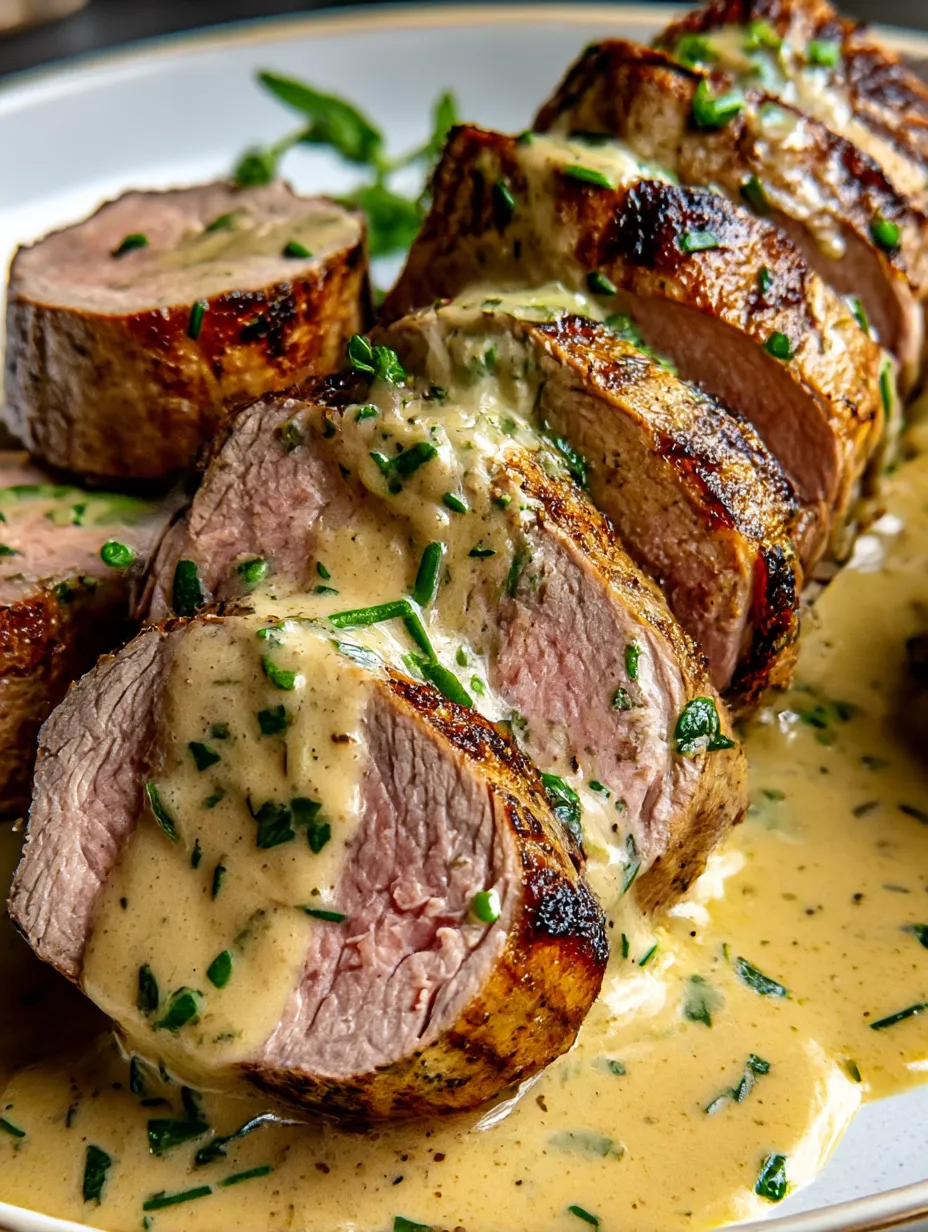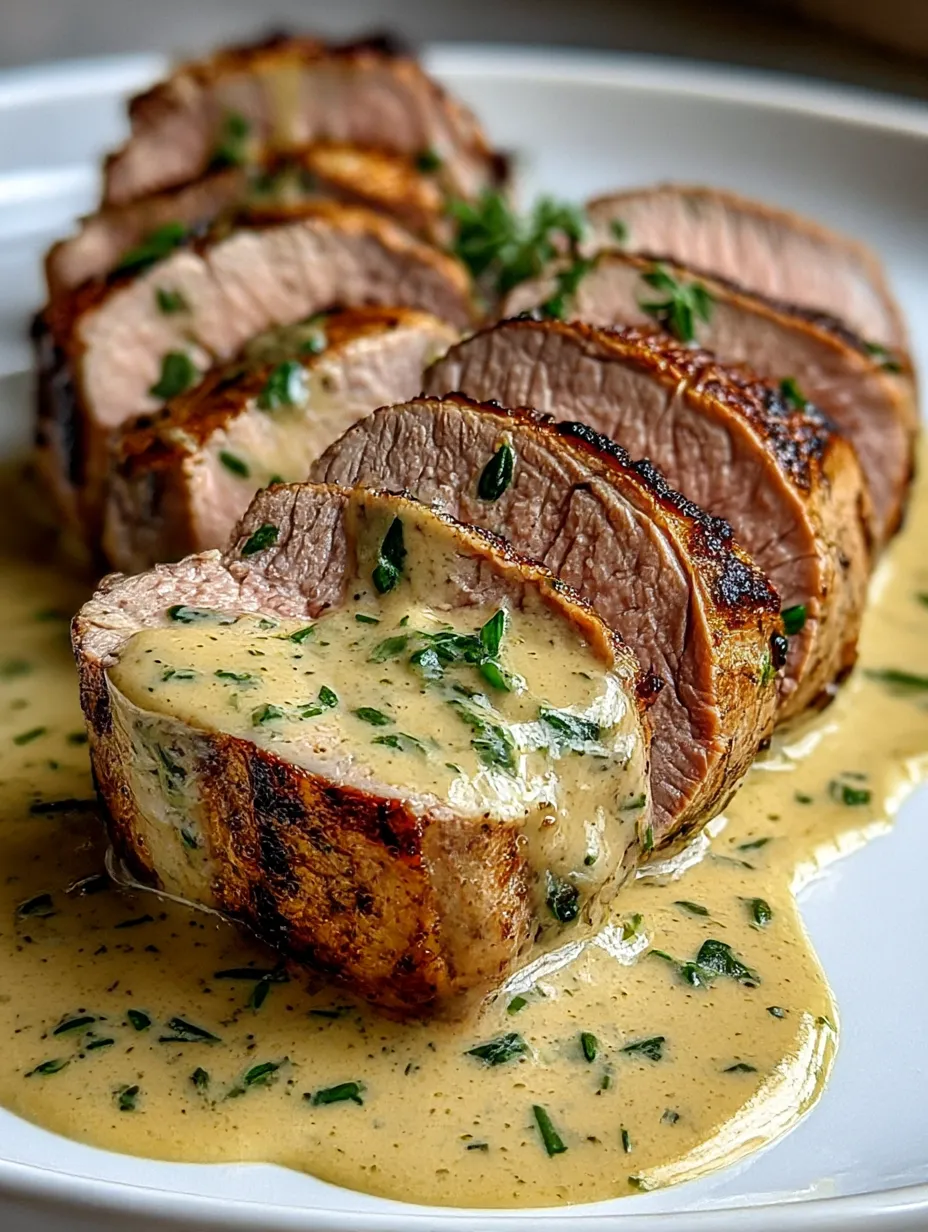 Save
Save
This Best-Ever Pork Tenderloin with Dijon Cream Sauce is that showstopping dish you can count on for both weeknights and special dinners. You get juicy pork with a beautiful sear and the creamiest Dijon sauce—all in just thirty minutes from start to finish. If you want something that feels fancy but is truly foolproof, this is the one to make.
The very first time I made this, it was for a last-minute birthday dinner. The aroma had everyone crowded in my kitchen and there were zero leftovers by the end of the night.
Ingredients
- Pork tenderloin: about one and a half pounds Pick one that feels firm and is free of excess silver skin. This is your juicy centerpiece.
- Dijon mustard: Adds tangy flavor depth and helps tenderize the meat. Look for a Dijon with a creamy consistency and smooth bite.
- Heavy cream: Brings rich silkiness to the sauce. Choose a heavy cream with the highest fat content if possible for extra lusciousness.
- Fresh thyme or rosemary: Gives herbaceous freshness. Fresh herbs release the best aroma and flavor so grab a lively bunch.
- Garlic cloves minced: Infuses everything with warm savory complexity. Firm heads with no green shoots are best.
- Low sodium chicken broth: Adds savory backbone to the sauce. Choose broth with clear golden color and minimal sediment for best taste.
- Salt and pepper to taste: Essential for pulling all the flavors together. Freshly cracked black pepper always gives the best finish.
- Olive oil: For searing and developing a golden crust. Use a fruity olive oil for even more aroma.
Step-by-Step Instructions
- Pat and Season:
- Pat the pork tenderloin dry using paper towels and rub all sides evenly with salt pepper and Dijon mustard Press the seasoning in to make sure it sticks and coats the whole surface
- Sear:
- Sear the pork in a hot oven safe skillet with olive oil Turn it every few minutes to achieve a deep golden crust on each side This caramelizes the exterior and seals in juices which is key for the finished flavor
- Roast:
- Transfer the skillet to a preheated oven and roast until the internal temperature of the pork reaches one hundred forty five degrees Fahrenheit This usually takes around fifteen to twenty minutes The juices should run barely pink when tested with a knife
- Rest and Make Sauce:
- Remove the pork and let it rest on a board to keep every slice juicy In the same skillet sauté the minced garlic over low heat until fragrant Scrape up any browned bits left from the meat then pour in chicken broth Stir and let simmer for a few minutes to reduce slightly Add heavy cream and a spoonful of Dijon and keep stirring until the sauce thickens and becomes glossy
- Serve:
- Slice the rested pork into medallions Lay them out and spoon generous amounts of warm Dijon cream sauce over the top for a beautiful finish

There is just something magical about how the Dijon mustard transforms into this rich aromatic sauce as it blends with cream and herbs. I always find myself sneaking a spoonful or two straight from the pan before serving—my kids joke that it is the real chef’s treat.
Storage Tips
Store leftovers in an airtight container in the fridge for up to three days. The pork stays tender when sliced and reheated gently in the sauce over low heat. For best results add a splash of chicken broth or cream while warming to keep everything silky.
Ingredient Substitutions
If you do not have heavy cream you can use half and half or even whole milk though the sauce will be slightly lighter. Fresh rosemary can be swapped for thyme if that is what you prefer. For an extra depth you can add a splash of white wine just before pouring in the cream.

Serving Suggestions
I love piling these tender medallions over creamy mashed potatoes or a garlicky wild rice pilaf. Add roasted vegetables for color and crunch. For a more casual approach tuck a few slices in crusty rolls with the sauce for the most decadent sandwiches.
A Touch of History
Pork tenderloin has long been cherished in European and American kitchens for its mild flavor and quick cooking. Dijon mustard hails from the Burgundy region in France and pairing it with cream and pork is a timeless nod to classic French home cooking.
Recipe FAQs
- → How do I know when pork tenderloin is fully cooked?
Use a meat thermometer to check the thickest part of the pork; it should register 145°F (63°C) for optimal juiciness. Let it rest a few minutes after roasting for the best texture.
- → Can I substitute rosemary for thyme?
Absolutely! Rosemary provides a lovely herbal note. Use it in place of or alongside thyme to enhance the flavor profile.
- → What can I use instead of heavy cream?
For a lighter alternative, try half-and-half or whole milk. The sauce may be a bit thinner, but you'll still get creamy results.
- → Do I need to marinate the pork ahead of time?
A quick rub with mustard, salt, and pepper just before cooking imparts great flavor. For deeper taste, marinate briefly if desired.
- → How should I slice the pork tenderloin?
After resting, use a sharp knife to cut the pork into medallions about 1/2–inch thick, then top with the creamy Dijon sauce.
